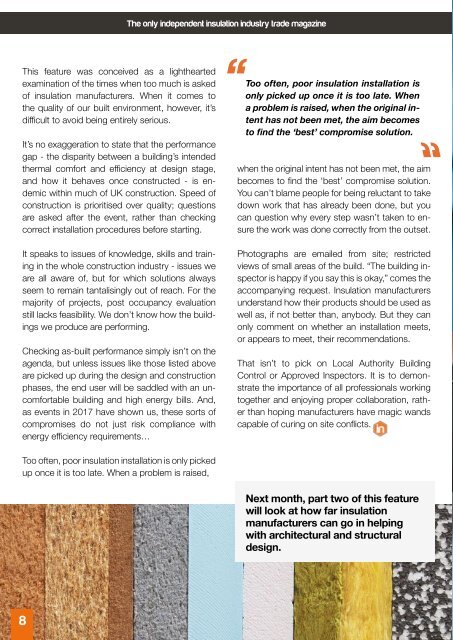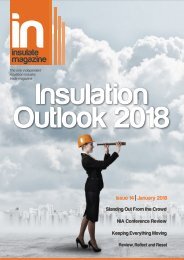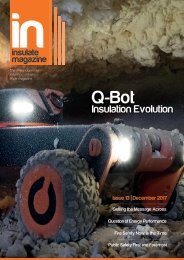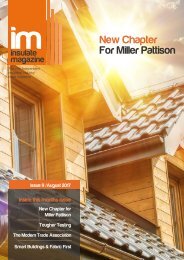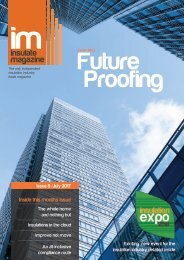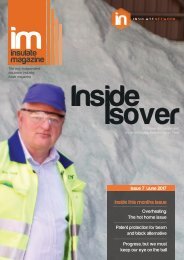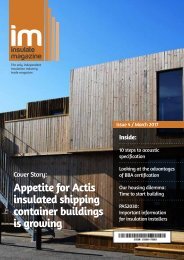Insulate Magazine Issue 11
You also want an ePaper? Increase the reach of your titles
YUMPU automatically turns print PDFs into web optimized ePapers that Google loves.
The only independent insulation industry trade magazine<br />
This feature was conceived as a lighthearted<br />
examination of the times when too much is asked<br />
of insulation manufacturers. When it comes to<br />
the quality of our built environment, however, it’s<br />
difficult to avoid being entirely serious.<br />
It’s no exaggeration to state that the performance<br />
gap - the disparity between a building’s intended<br />
thermal comfort and efficiency at design stage,<br />
and how it behaves once constructed - is endemic<br />
within much of UK construction. Speed of<br />
construction is prioritised over quality; questions<br />
are asked after the event, rather than checking<br />
correct installation procedures before starting.<br />
It speaks to issues of knowledge, skills and training<br />
in the whole construction industry - issues we<br />
are all aware of, but for which solutions always<br />
seem to remain tantalisingly out of reach. For the<br />
majority of projects, post occupancy evaluation<br />
still lacks feasibility. We don’t know how the buildings<br />
we produce are performing.<br />
Checking as-built performance simply isn’t on the<br />
agenda, but unless issues like those listed above<br />
are picked up during the design and construction<br />
phases, the end user will be saddled with an uncomfortable<br />
building and high energy bills. And,<br />
as events in 2017 have shown us, these sorts of<br />
compromises do not just risk compliance with<br />
energy efficiency requirements…<br />
Too often, poor insulation installation is<br />
only picked up once it is too late. When<br />
a problem is raised, when the original intent<br />
has not been met, the aim becomes<br />
to find the ‘best’ compromise solution.<br />
when the original intent has not been met, the aim<br />
becomes to find the ‘best’ compromise solution.<br />
You can’t blame people for being reluctant to take<br />
down work that has already been done, but you<br />
can question why every step wasn’t taken to ensure<br />
the work was done correctly from the outset.<br />
Photographs are emailed from site; restricted<br />
views of small areas of the build. “The building inspector<br />
is happy if you say this is okay,” comes the<br />
accompanying request. Insulation manufacturers<br />
understand how their products should be used as<br />
well as, if not better than, anybody. But they can<br />
only comment on whether an installation meets,<br />
or appears to meet, their recommendations.<br />
That isn’t to pick on Local Authority Building<br />
Control or Approved Inspectors. It is to demonstrate<br />
the importance of all professionals working<br />
together and enjoying proper collaboration, rather<br />
than hoping manufacturers have magic wands<br />
capable of curing on site conflicts.<br />
Too often, poor insulation installation is only picked<br />
up once it is too late. When a problem is raised,<br />
Next month, part two of this feature<br />
will look at how far insulation<br />
manufacturers can go in helping<br />
with architectural and structural<br />
design.<br />
8


